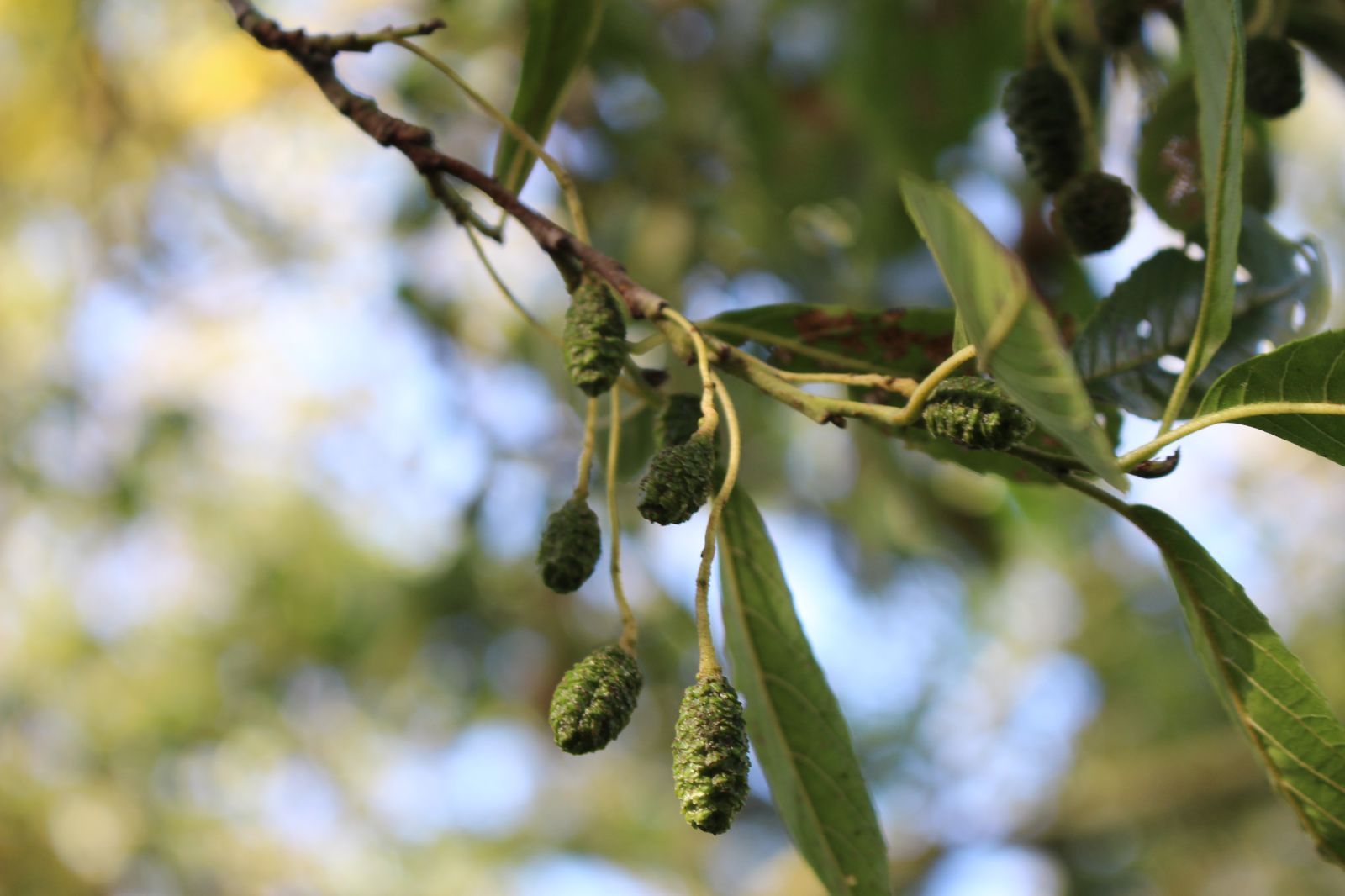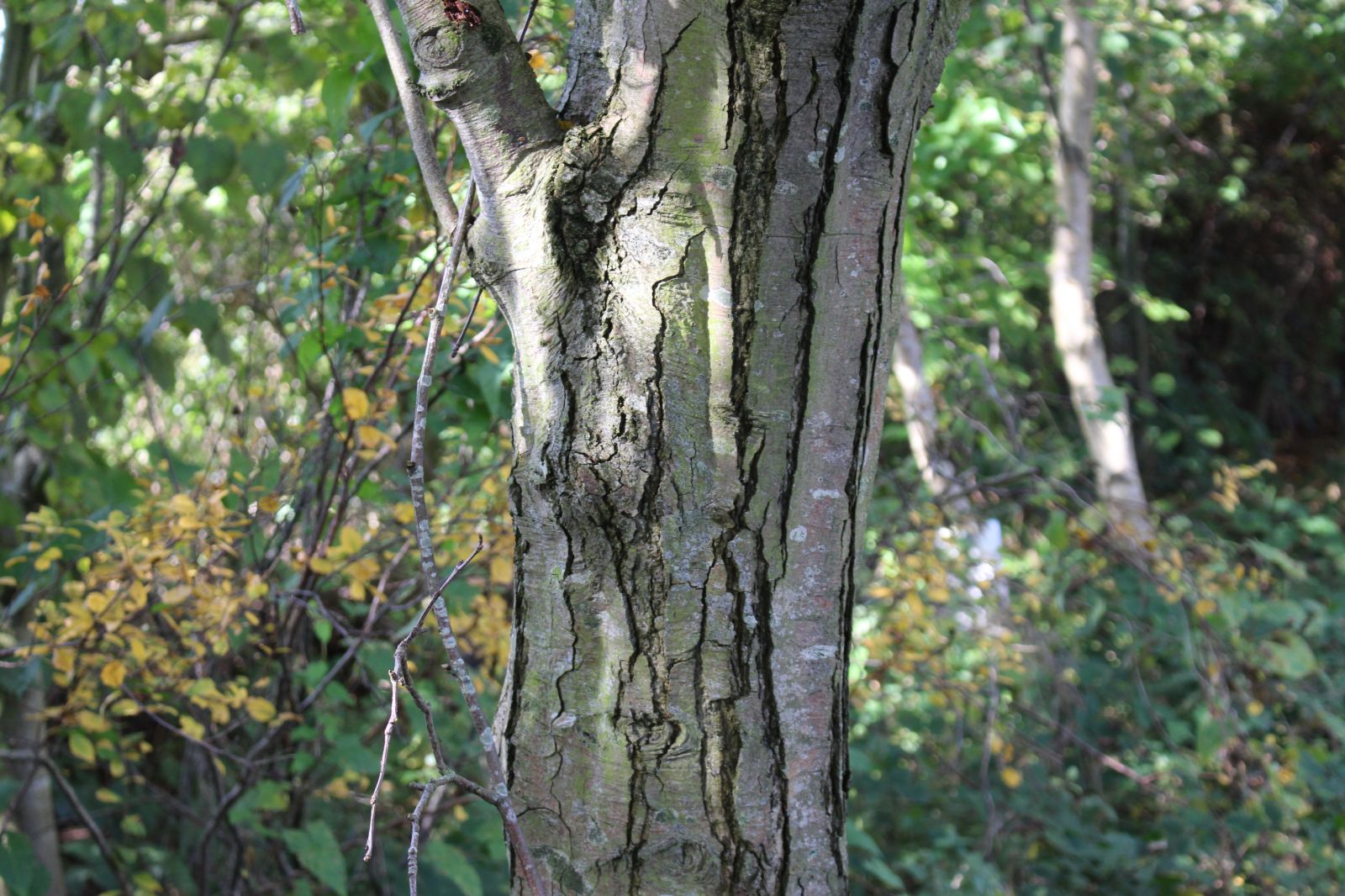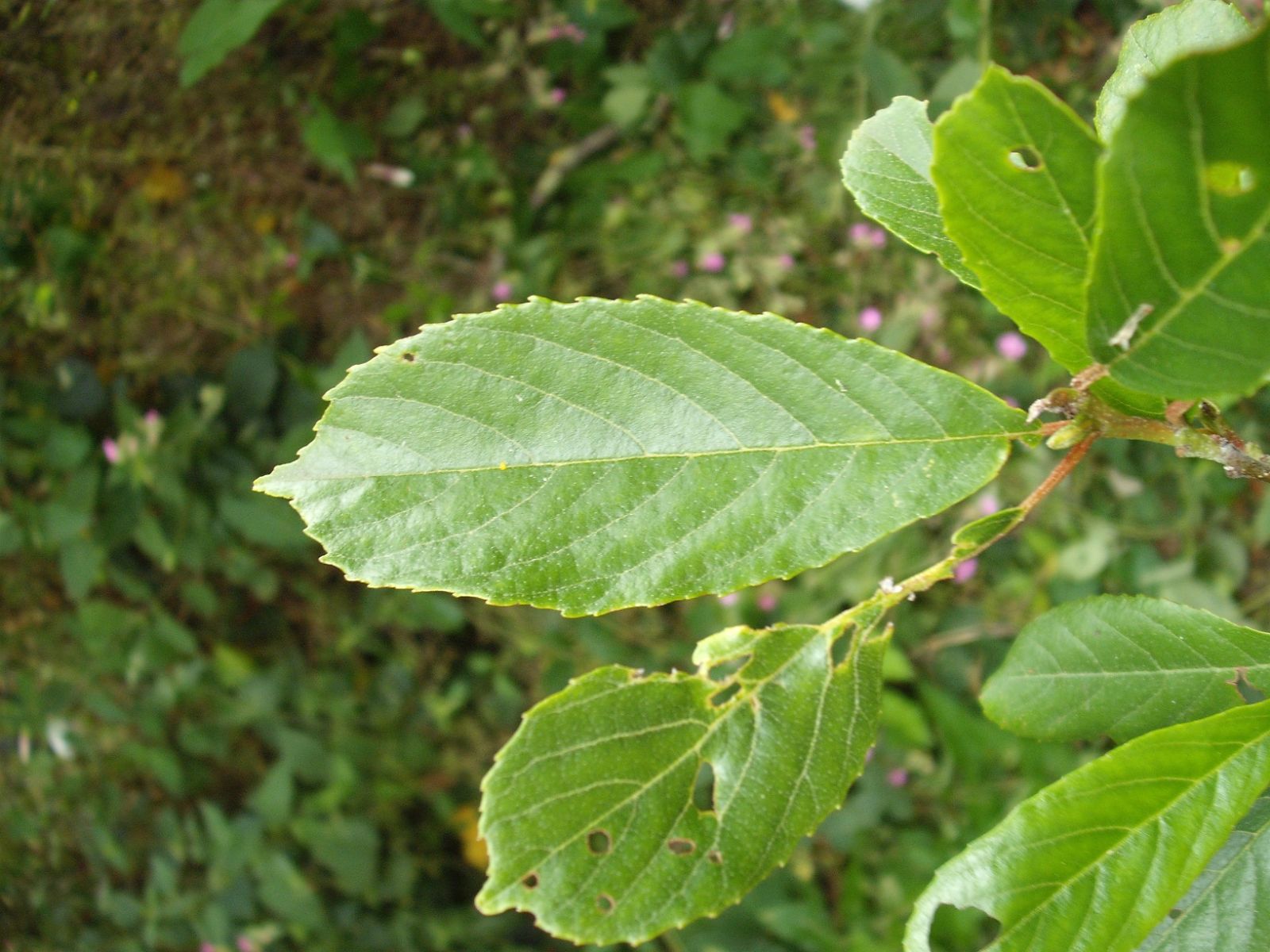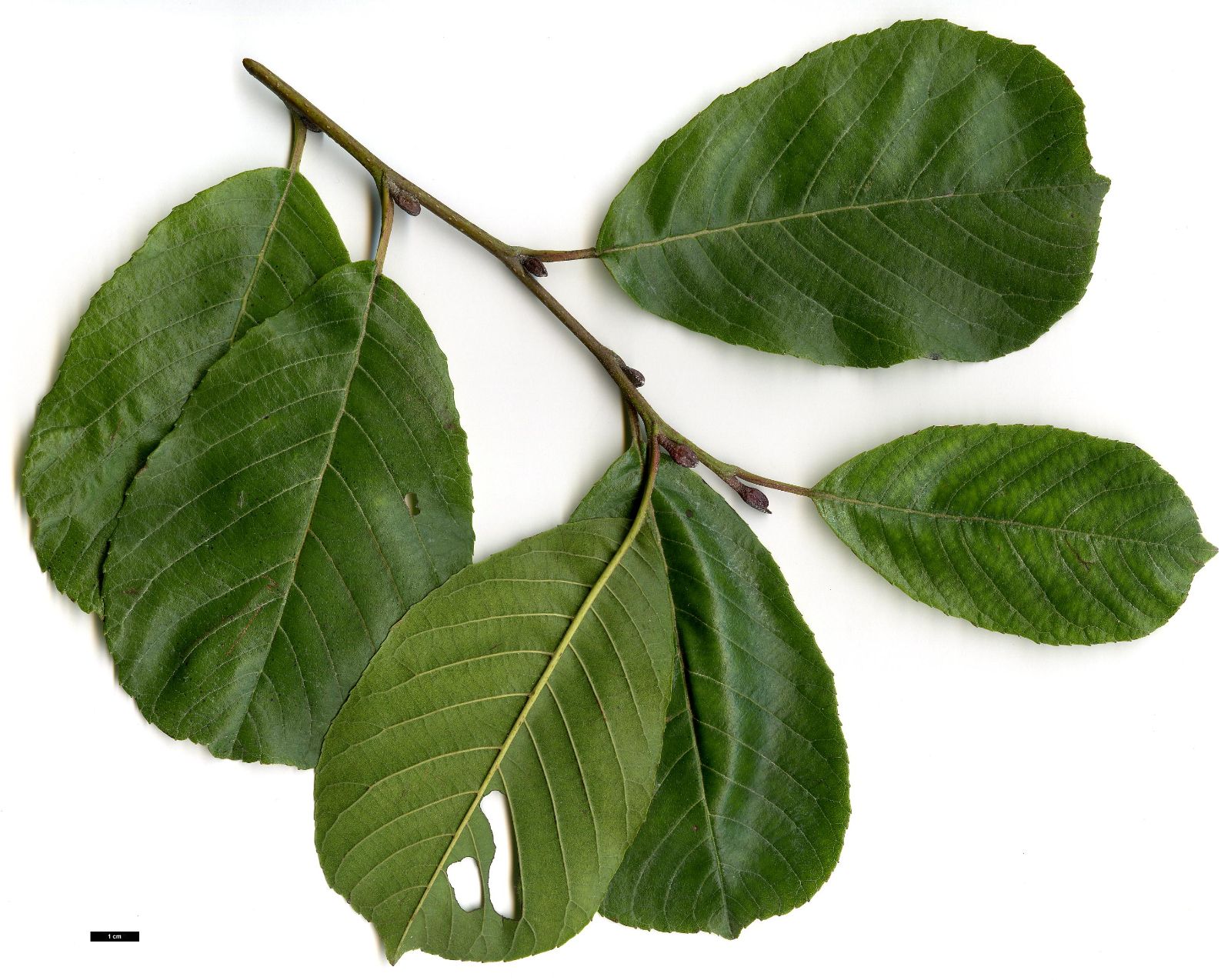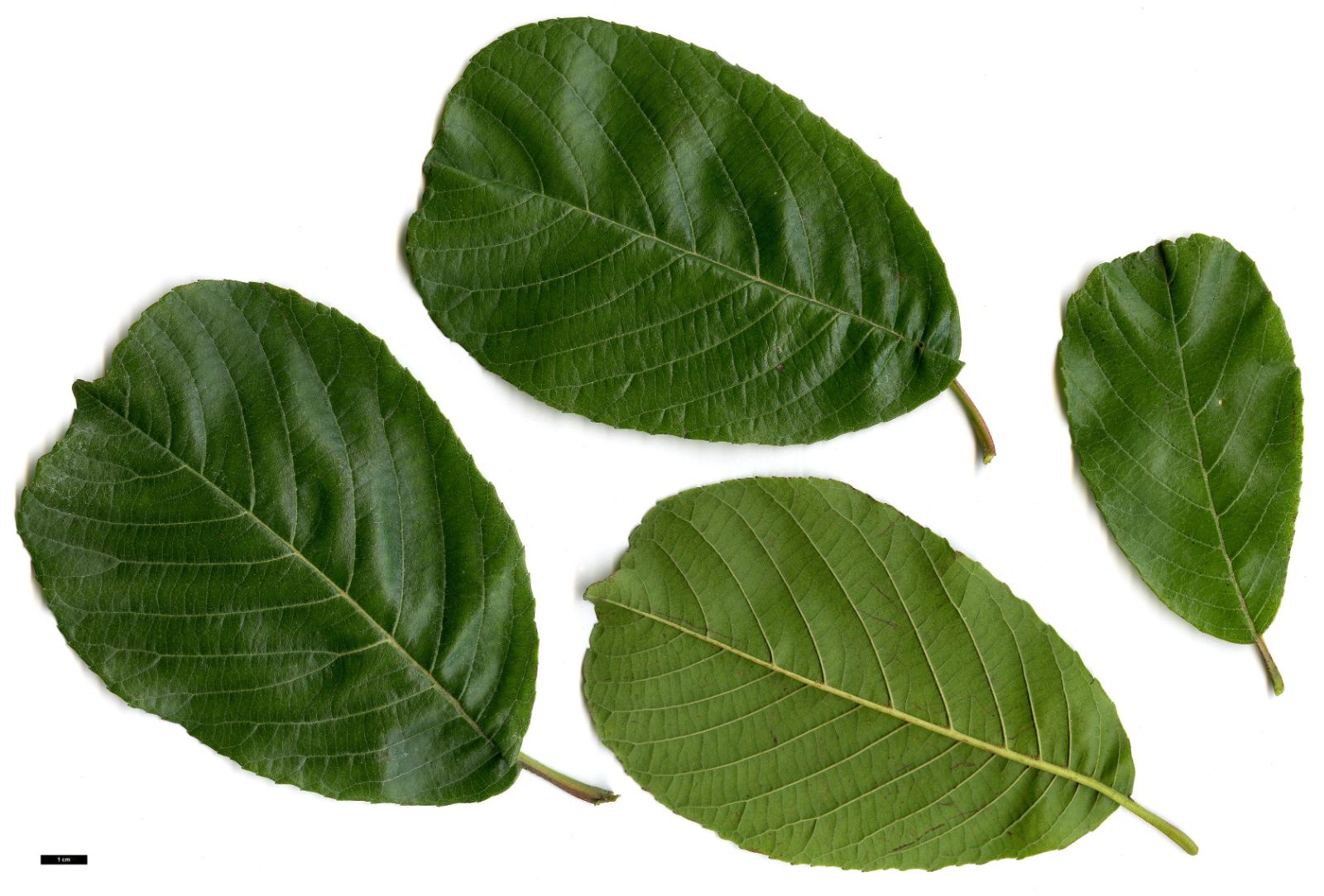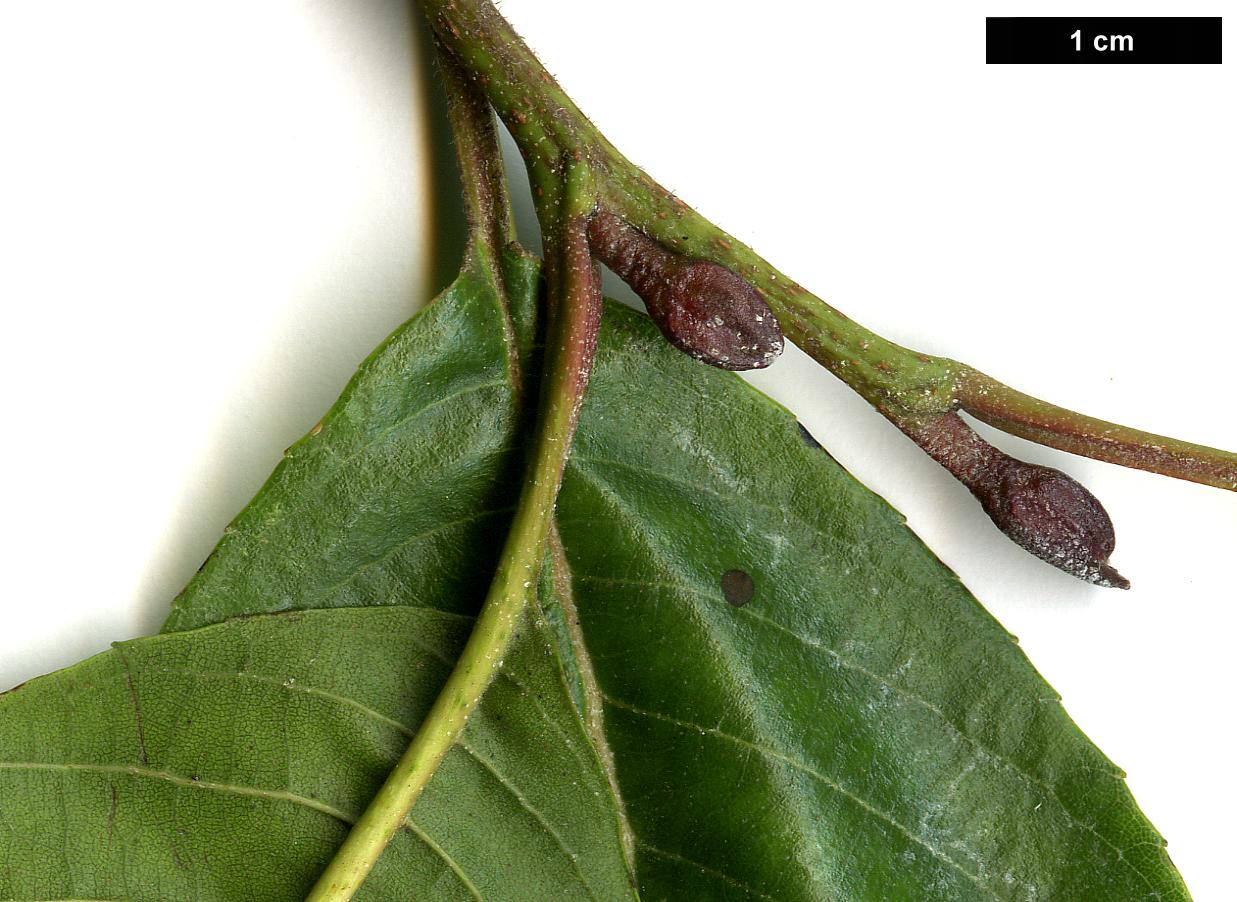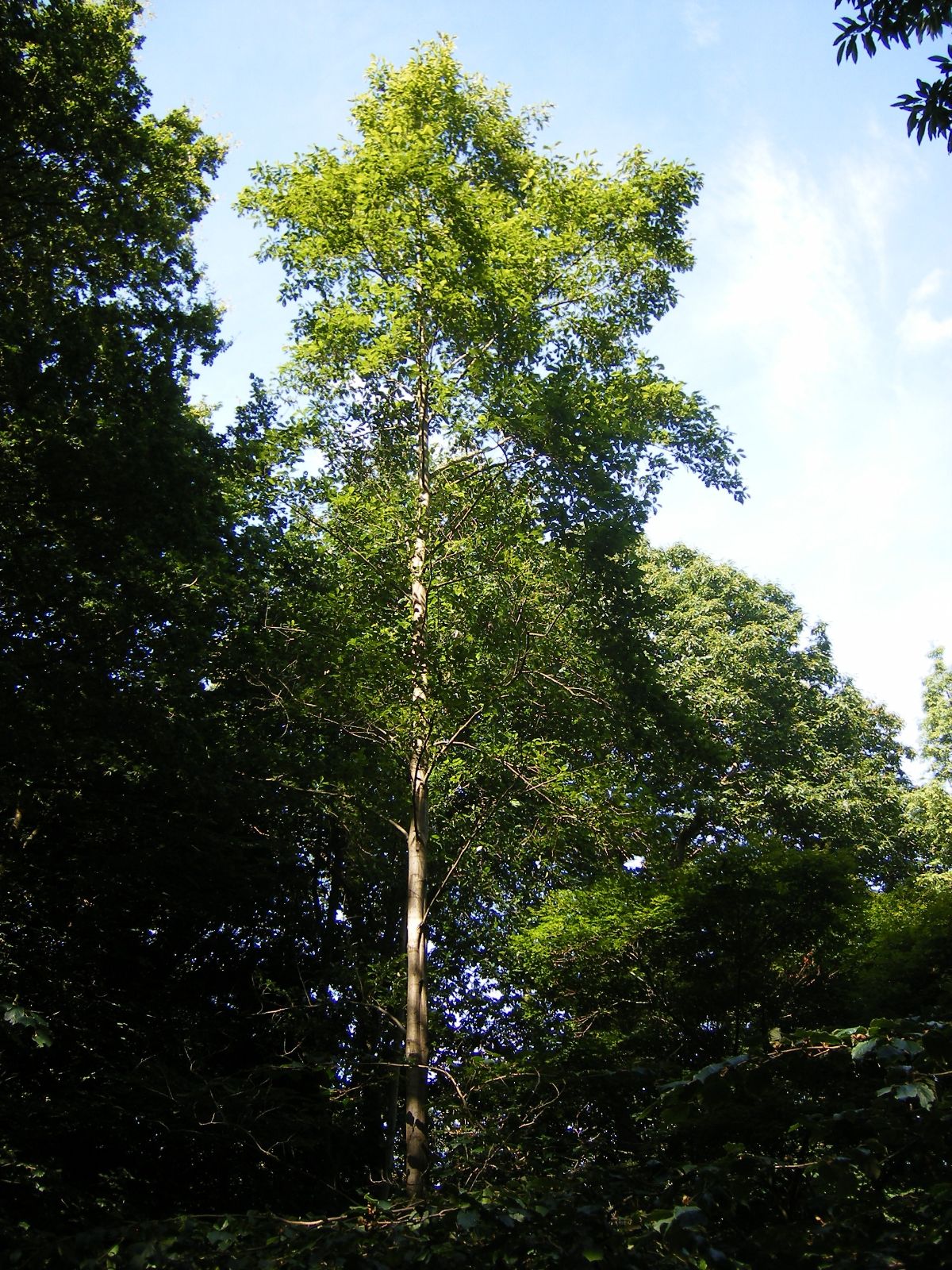Alnus cremastogyne
Sponsor
Kindly sponsored by
a member of the International Dendrology Society
Credits
Tim Baxter & Hugh A. McAllister (2024)
Recommended citation
Baxter, T. & McAllister, H.A. (2024), 'Alnus cremastogyne' from the website Trees and Shrubs Online (treesandshrubsonline.
Genus
- Alnus
- Subgen. Alnus, Sect. Cremastogyne
Synonyms
- Cremastogyne longipes Czerep.
Other taxa in genus
- Alnus acuminata
- Alnus alnobetula
- Alnus betulifolia
- Alnus cordata
- Alnus djavanshirii
- Alnus dolichocarpa
- Alnus × elliptica
- Alnus × fallacina
- Alnus fauriei
- Alnus ferdinandi-coburgii
- Alnus firma
- Alnus formosana
- Alnus glutinosa
- Alnus hirsuta
- Alnus incana
- Alnus inokumae
- Alnus japonica
- Alnus jorullensis
- Alnus lanata
- Alnus lusitanica
- Alnus maritima
- Alnus matsumurae
- Alnus × mayrii
- Alnus nepalensis
- Alnus nitida
- Alnus oblongifolia
- Alnus orientalis
- Alnus pendula
- Alnus rhombifolia
- Alnus rohlenae
- Alnus rubra
- Alnus serrulata
- Alnus serrulatoides
- Alnus sieboldiana
- Alnus 'Sipkes'
- Alnus × spaethii
- Alnus subcordata
- Alnus trabeculosa
Upright single-stemmed tree to 30m tall. Bark smooth, silver-grey; branches and twigs grey, sparsely white hairy to glabrous, somewhat resinous. Buds short stalked, black-brown, scaly with two scales, glabrous. Petiole 1–2 cm, brown-green, glabrous. Leaves 4–14 × 3.5–8 cm, obovate to oblanceolate, apex abruptly acute, especially on vigorous growth, base cuneate, glossy dark-green above, mid-green below, glabrous except for a few soft white hairs on veins and tufts in vein axils, margins regularly toothed with small, even, forward-pointing teeth, semicraspedodromous with 8–10 veins on either side mid-vein, alternate, blade flat to somewhat curved towards edges. Female inflorescences single, held on densely scaly pendulous peduncle in leaf axil, 4–7 cm long. Fruit soft, lumpy and resinous, 1–3.5 × 1–1.5 cm, oblong; scales dark brown with four wide equal terminal lobes, 4 × 5 mm; seeds 2 × 3 mm, with wing somewhat thickened to half the width of seed, often narrower. Flowers May to July; fruits August to October. (Li & Skvortsov 1999, T. Baxter pers. obs.).
Distribution China SE Gansu and Shaanxi, through Sichuan and east to Zhejiang
Habitat In forests on mountain slopes or along stream sides at 500–3000 m asl. It tolerates poor soils but is both heat and light demanding.
RHS Hardiness Rating H4
Conservation status Least concern (LC)
Along with Alnus lanata and A. ferdinandi-coburgii, A. cremastogyne belongs to Section Cremastogyne, a distinct group characterized by single female flowers, fruit held in the leaf axils, leaves all broadest at the apex and coming to an abrupt acute tip, and distinct black scaly buds. Of these three species A. cremastogyne is readily distinguished with its more or less glabrous leaves and twigs, and by its soft, resinous fruit borne on long pendulous peduncles. A. lanata by contrast is densely white-buff hairy, especially on young shoots and leaf undersides. A. ferdinandi-coburgii has erect fruit borne on very short peduncles and is also more or less glabrous. The ranges of these species overlap, and it is possible they may hybridise, with all recorded as being tetraploid except A. cremastogyne (tetraploid and diploid). Although the general consensus is that these three species are distinct, further inventigation is warranted.
This is a highly adaptable alder, with a short juvenile period, high seed yield, and rapid growth rate. This is represented in its genetic diversity and wide geographical range (Guo et al. 2019). It is grown in quantity in its native range and makes a fast-growing tree, valued for firewood, timber, for soil stabilisation and agroforestry, and as a green manure (Li 2001; Wang 1986). It primarily grows in temperate regions, in habitats with ample sunlight and summer heat. In cultivation in cool-temperate regions it is susceptible to damage by early and late frosts, but in regions with mild winters and summer heat it grows quickly into a tall straight tree. In all cases it grows best in damp conditions protected from cold winds, and in optimal sites is occasionally semi-evergreen.
Alnus cremastogyne was discovered by Augustine Henry in Sichuan in 1899 and introduced by Ernest Wilson in 1907. Material traceable to Wilson’s introduction has probably died out, but it continues to be represented by several subsequent introductions. Nevertheless it remains a rare tree in cultivation outside its native range, with plants known only from major collections such as Kew, Ness and a few others in the UK. The plants at Kew and Ness were raised from seeds received from the Chinese Academy of Forestry in 1976 or 1977, while others are traceable to collections made on the SBEC expedition of 1980, in Sichuan. These collections have so far made straight single-stemmed trees to 7–10 m tall. There is a question as to the hardiness of A. cremastogyne in cultivation, often showing cold damage to early flushes of foliage and inflorescences, but the tallest examples in cultivation are younger than those mentioned above, suggesting provenance has an important bearing on performance: trees at Howick from H&M 2102 were 18.5 m in 2019; one planted at Tregrehan in 1989 was 18 m in 2014; and in Ray Wood at Castle Howard, North Yorkshire, a tree planted in 1990 has made a beautiful straight-stemmed specimen 17.6 m in 2019 (The Tree Register 2021). A. cremastogyne is susceptible to Alder Leaf Beetle and is frequently badly damaged or defoliated (T. Baxter pers. obs.).

